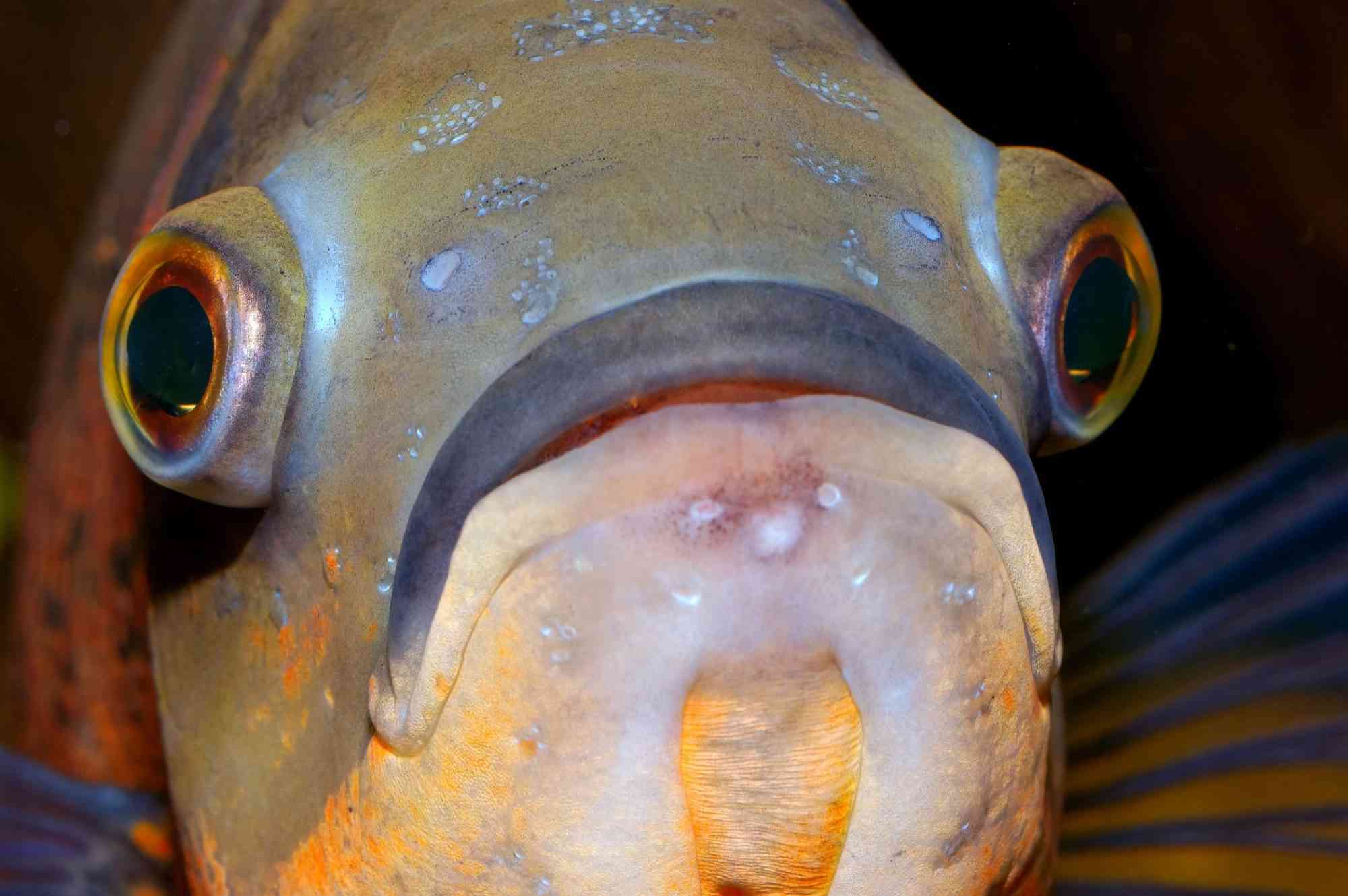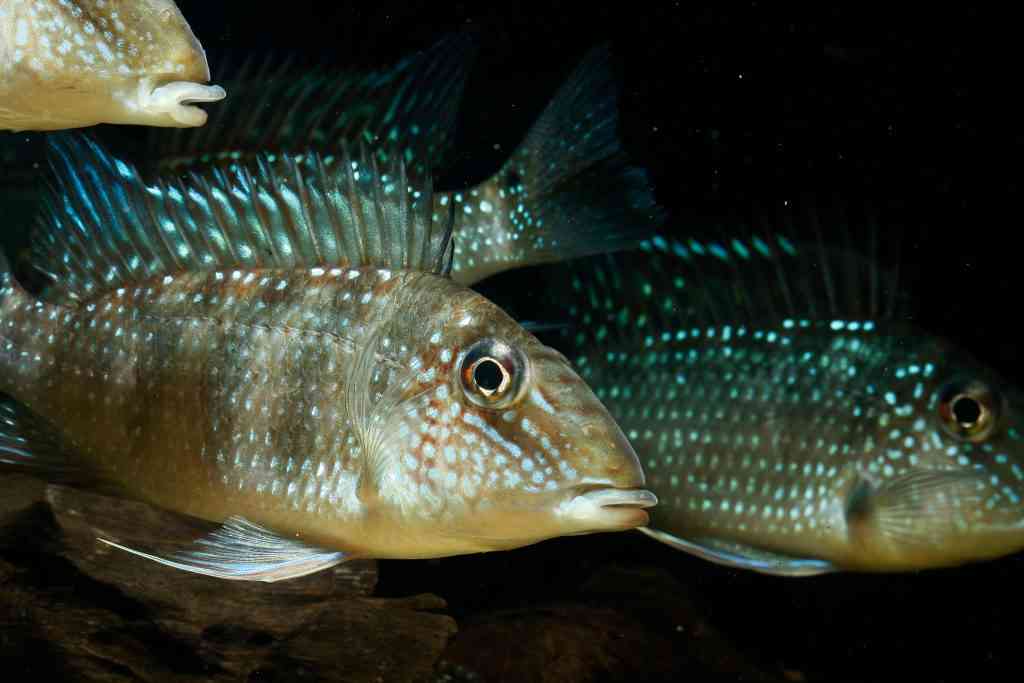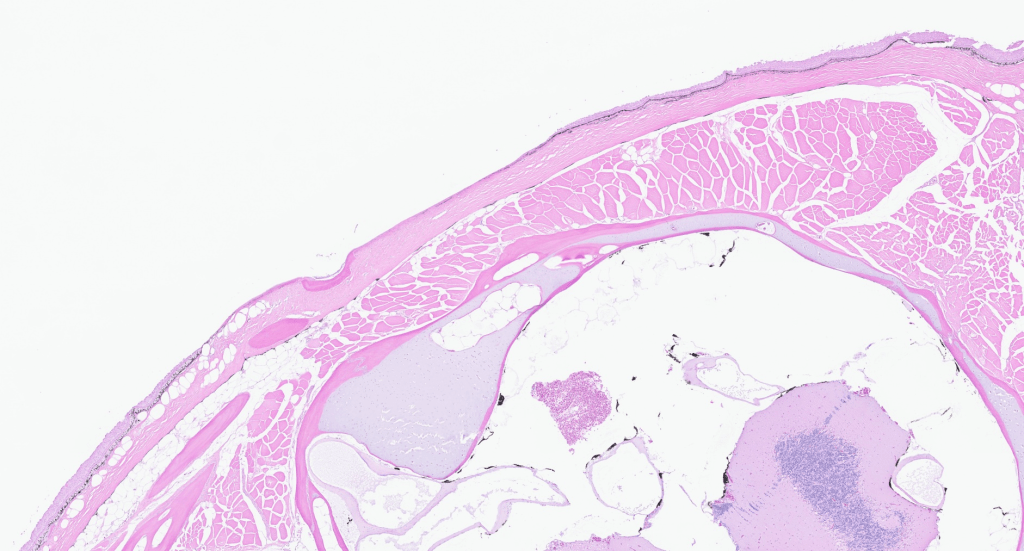A fish veterinarian explains what “Hole-in-the-Head” Disease is (and isn’t)

The first Oscar (Astronotus ocellatus), “Dino,” that I ever kept developed “Hole-in-the-Head” (“HITH”) Disease, which is commonly referred to as “Head and Lateral Line Erosion” (“HLLE”) by hobbyists. Pitted areas that were paler than the rest of the skin started around her nares, spread to cover parts of her head, and then extended along her lateral line.
I remember feeling awful when I noticed and identified what was going on. I had wanted an Oscar for years and was finally able to get one when I acquired a 55-gallon aquarium that my science teacher was giving away for free because he was retiring. I had painstakingly researched keeping Oscars, and I was mostly keeping mine correctly. I had a large enough tank for Dino, no conspecifics, an appropriately-sized canister filter (my first time using one), and I was feeding a high-quality pellet formulated for cichlids. Unfortunately, Dino still developed lateral line depigmentation (LLD, the veterinary term to describe “hole-in-the-head” disease in fish).
LLD is a condition that fishkeepers most commonly observe in Oscars, but it is also prevalent in many species of South American cichlids (read Jen’s A Matter of Scale article about her experiences keeping large cichlids in massive public aquarium exhibits). When I volunteered at a public aquarium in college, we had eartheaters (various Geophagus and Satanoperca species) that were affected by LLD. LLD is characterized by pale, pitting lesions that begin on the fish’s head and extend caudally along the lateral line as the condition progresses. In severe cases, the skin can thin away completely to expose underlying bone. Fish affected by LLD can have extensive skin lesions and remain otherwise normal, with good activity and appetite despite their severe skin disease.
- Lateral Line: A sensory organ that is a long line that runs along both sides of the fish. They use this to detect movement in the water around them.
- Nares: Fish’s nostrils; they do not connect with the mouth internally like in mammals. Instead, water flows in the front opening and out the back opening.
- Inflammation: A way that the body responds to infectious agents such as parasites, bacteria, and fungi; inflammatory cells such as white blood cells are sent to respond to invading organisms. Inflammation can also be caused by non-infectious disease processes.
- Epithelium: The type of tissue that forms the skin.
- Etiology: The cause of a disease.

When the skin lesions from LLD are examined on a cellular level with a microscope, the skin is typically very thin with no inflammation and no signs of infectious agents such as parasites. The fact that there is no inflammation and no signs of infectious agents is critically important to understanding LLD, because one of the most pervasive fish disease myths circulating in the aquarium hobby is that “Hole-in-the-Head” is caused by the flagellate parasite “Hexamita” (Hexamita is an outdated name; the current scientific name for this organism is Spironucleus).

If any infectious agent like a parasite or bacterium was the underlying cause of LLD, we would expect to see signs of this when examining the tissues under a microscope. Even if we didn’t find the parasite itself, we should be able to see damage induced by the parasite (particularly inflammation). The consistent lack of finding any infectious agent or inflammation in LLD cases means that parasitic and bacterial causes for this condition are unlikely, and we should be considering other causes such as nutritional, environmental, or hereditary etiologies. This also means that this condition cannot be effectively treated with antibiotics such as metronidazole and kanamycin.

While there is enough scientific literature and case reports available to know that LLD is unlikely to be an infectious disease such as Hexamita, there is less high-quality information available to understand the underlying causes of LLD. In the case of my Oscar, I focused on improving the quality of her diet. During my time working at PetSmart, I learned that many people were feeding their Oscars very poor diets, including feeder fish and frozen beefheart; neither of these are appropriate foods for Oscars. I started soaking the cichlid pellets in a vitamin supplement before feeding and incorporated vitamin-coated crickets, frozen vegetables, and spirulina pellets into Dino’s diet. I was very happy when the lesions on Dino’s head improved and ultimately resolved after starting this diet.
Dino’s LLD resolving with the improved diet is nowhere near enough information to suggest a nutritional cause of LLD in Oscars. I’m including this anecdote here because proper feeding is an important part of ensuring good health in any Oscar and South American cichlid, and my experience is that it is not uncommon in the hobby for these fish to be receiving inappropriate diets.
I wish that I could provide a more definitive explanation of the cause of Lateral Line Depigmentation in fish and detailed information on how to treat it. However, high-quality research into this condition is lacking. While we know that LLD is most likely not infectious and isn’t effectively treated with medications, we just do not know the exact reasons it happens. More research is needed into this prevalent disease of Oscars and other South American cichlids, and I hope that someday I will be able to return to this article and update it with new research findings that explain what causes this frustrating condition and how hobbyists can prevent and manage it.

